Rear channel speakers for home theater
Bipole vs dipole vs monopole
When you shop for home theater surround speakers, you’ll encounter some models that are specially designed to render rear-channel sound effects.
Are those required?
Or should you get regular speakers, like the ones you’d use for your front left and right channels?
3 types of rear surround speakers
This article will help you understand the three main types of rear channel speakers and choose the ones that are best for your setup.
Monopole – A monopole speaker is a standard speaker, with drivers mounted to the front of a box-shaped enclosure. In the context of surround sound, monopole speakers are often referred to as “direct-radiating” speakers. That means they project sound straight ahead, directly toward the listener. Regular bookshelf speakers are the kind most commonly used as rear surround speakers. You could also use in-wall or ceiling speakers.
Dipole – In a dipole speaker, two sets of drivers sit on opposite sides of a wedge-shaped enclosure. To create a diffuse sound field, the drivers operate out of phase. That means the drivers on one side of the cabinet are moving outward while the other set is moving inward. This creates a figure-8 dispersion pattern. The pattern’s “null area” is aimed at the listener.
Bipole – Bipole speakers are a bit of a hybrid. They’re typically wedge-shaped like dipole speakers, but the drivers operate in phase. That means the drivers move in sync with one another. Bipole speakers disperse some sound directly toward the listener, but not as much as monopoles do. They produce a diffuse sound field, but they mix in a hint of direct radiation.

Many of the special wedge-shaped surround speakers can be switched between dipole and bipole operation. Dipole mode is usually used for side-wall installation. Bipole mode can be used in either side- or rear-wall installation.
To help you understand why the specialized bipole and dipole speakers were developed, we’ll start with a little surround sound history. For a refresher course, I turned to Andrew Jones, vice president for engineering at ELAC and one of the world’s leading speaker designers.
The early days of surround sound
In the 1970s, audio legend David Hafler came up with a way to extract ambient sounds from stereo recordings and direct those sounds to a pair of speakers situated behind the listener. Jones explained the science behind this so-called “Hafler hookup.”
In the Hafler setup, you wire an extra pair of speakers in series across an amplifier’s positive terminals. Current flows through the extra speakers only when there’s a difference between the left- and right-channel signals.
In most recordings, the vocals and much of the other primary musical content comes from the center. That means those sounds receive equal emphasis in the left and right channels. Since there’s no difference between the channels, none of those centered sounds goes to the rear speakers.
What’s left? Echoes of the music and other ambient sounds, such as applause. When these ambient sounds played from the rear speakers, listeners enjoyed more of a concert-hall experience.
Early versions of surround sound for home theater were based on the “Hafler hookup” principles. The audio information sent to the rear speakers from a movie soundtrack was typically a lo-fi wash of reverberant sound. When those primitive rear channel sounds were played too loud or aimed directly at the listener, they tended to spoil, rather than enhance the home theater experience.

Andrew Jones of ELAC on one of his many visits to Crutchfield headquarters.
“You don’t want to be taken out of the movie,” Jones said. “You want the sound effects going on around you. But you don’t want them to suddenly pull you out.”
Eager to solve this problem, Jones explained, product designers asked, “What if the speaker itself is not localizable?”
Dipole speakers, which disperse sound in a figure-8 pattern, were the answer. Place dipole speakers along the side walls and aim the figure-8 pattern’s “null” area at the listener’s ear. She will hear sounds reflected off the front and rear walls, but little to no sound coming directly from the speaker itself.
“It puts spatial information into the room and bounces it around,” Jones said “So I hear sounds coming from all the way around me – a diffuse sound. That was the idea behind it. I get a sound field – a non-specific sound field – but better than having limited specifics.”
Are dipole and bipole speakers obsolete?
Andrew Jones calls dipole and bipole speakers “a throwback to the past.”
“I like to call them diffuse-field speakers,” he said. “In the limited early days of surround sound, you needed a diffuse sound field.”
When discrete surround formats like Dolby Digital came along, rear channel sound “really started to have some reality to it,” Jones said. “Now engineers were mixing a sound field, but based on the assumption that those were all conventional speakers.”
“A lot of people were still using dipoles or bipoles,” he said, “because that’s what they’d been led to believe you need to buy. They might even prefer that effect.”
The reason why some people continued to favor the sound of bipoles or dipoles? They can be more pleasing than conventional speakers if you have to place your rear speakers in less-than-ideal locations. With conventional speakers, precise placement is key to re-creating the sound field that the mixing engineers intended you to hear.

This model of a 7.1 surround sound system uses precisely-placed monopole speakers for the rear channels. If a layout like this won't work in your living room, then wall-mounted bipole speakers might be a better choice.
“So,” Jones said, “even though theoretically you should not use a dipole or bipole surround speaker for the rear channels, can you honestly say that in sub-optimal placement conditions, that’s wrong? If it gives you the great surround sound effect, why not?”
“After all,” he said, “You don’t have pictures surrounding you. So if you’ve got sounds coming from over here, you don’t know exactly where they were supposed to come from anyway. You just know that they came from off-screen.”
“If it sounds good to the people who are setting it up in their home, then I can’t really say don’t do it.”
Still, he strongly prefers conventional speakers, especially in systems that go beyond 5.1 channels. The more speakers you have around you, the closer you can get to reproducing the sound field intended by the movie’s sound engineers.
The whole point of 7.1, 9.1, and beyond is to add more monopole speakers “to fill in the gaps and give you that continuous sound field,” Jones said.
Why you should use monopole speakers in a Dolby Atmos system
Dolby Atmos technology gives audio engineers an entirely new paradigm for mixing movie soundtracks. Instead of creating a mix for 5.1 or 7.1 channels, they can specify precisely where a sound should come from.
When your receiver decodes an Atmos soundtrack, Jones said, “it looks at the tag that says where the sound should come from, then looks at the number of speakers available and says, ‘what’s the best I can do by remixing into the available speakers?’”
“You’re defining where the ‘object’ should be and then doing your best, depending on the speaker layout, to make that happen,” he said. “The more speakers you have, the better success you’ll have.”
Because dipole and bipole speakers are imprecise by design, they can’t be trusted to place Atmos sound objects where they belong. For Atmos, go with conventional speakers for the rear channels.
Hands-on review: bipole vs dipole vs monopole
After speaking with Andrew Jones, I was inspired to compare the sound of bipole, dipole, and monopole speakers.
I hadn’t listened to bipole or dipole speakers in years, so I borrowed a pair of Monitor Audio Bronze FX bipole/dipole speakers. I also requisitioned a comparable pair of monopole speakers, the Monitor Audio Bronze 50 bookshelf speakers.
I connected the Bronze FX to my 5.1.4 home theater system, placing them to the sides of my listening seat at ear level, about 6.5 feet from the center of the sweet spot. Then I flipped the switch on the back of the Bronze FX to select dipole mode.
Next, I fired up my Yamaha RX-A2060 receiver's YPAO calibration software. The receiver set the size for the Bronze FX to small. That's to be expected since dipole speakers by nature don't produce much bass.
Listening to dipole and bipole modes
To evaluate the performance of the Bronze FX, I cued up a scene from Project Power, a Netflix action film with a Dolby Atmos soundtrack. The film stars Jamie Foxx as an ex-soldier on a mission to rescue his daughter, who had been kidnapped by a drug lord.
The drug in question is a pill that gives its users superpowers for a few minutes. In my test scene (which starts at 9:20), Foxx's character, who calls himself "The Major," shows up at the seedy apartment of a low-level dealer. He's seeking information about the dealer's supplier.
The dealer retreats to a back room, promising to call the supplier. Sensing that The Major might try to rough him up, the dealer swallows one of the superpower pills. A fight ensues.
The soundtrack's surround channels convey a lot of non-specific, atmospheric sounds. But they also deliver some very specific details, like a gunshot at the 11:20 mark. After the dealer swallows the pill at 12:20, you hear his body transform from dissipated drug addict to flaming super-villain. Much of this groaning and popping noise comes from the surround speakers.
Then the fight is on, and the rear channels come alive with the sounds of hand-to-hand combat. At 14:06, the dealer chases the Major through a neighboring apartment. They tussle past a cage full of chickens, and the right surround speaker issues some very specific frightened-chicken clucks.
With the Bronze FX in dipole mode, I could clearly hear the specific sounds, but their placements were off the mark.
Room dimensions and furniture placement matter
My home theater is in a room that's 22.5 feet deep. The theater occupies about a third of that. The surround speakers sit about 8 feet from the front wall. That leaves a little over 14 feet between the surround speakers and the rear wall.
Remember that most of what you hear from dipole speakers are sounds reflected off the front and rear walls. In my room, the reflections from the front wall hit my ears before the ones from the rear wall. That made the rear channel sounds feel like they came from an area that was closer to the front of the room.
In bipole mode, I didn't hear that as much. The surround sound field was both broad and engaging. I actually found myself tempted to buy the Bronze FX, though not primarily for their sound.

Wedge-shaped bipole/dipole speakers are great for wall-mounting.
A tip about wall-mounting
My rear speakers are usually wall-mounted. I did not bother with that for the speakers used in this experiment. But it occurred to me that the Bronze FX are much better suited for wall mounting than most bookshelf speakers.
Why?
First, you can place them pretty much flush to the wall, thanks to the twin keyhole mounts and recessed wire terminals.
Second, the Bronze FX are only 5" deep, so they won't stick out from your walls like sore thumbs. If you wall-mounted the Bronze 50 bookshelf speakers, they'd protrude by more than 11". That's an interior decorator's nightmare.

Bookshelf speakers like the Monitor Audio Bronze 50 work well as rear surround speakers.
Putting monopole speakers to the test
After I finished testing the Bronze FX, I connected the Bronze 50, recalibrated, and set the rear speaker size to large. The rear channel sounds of the Project Power fight scene felt more precise and powerful, without drawing too much attention to themselves.
At the 12:38 mark, our drugged-up villain emerges from the backroom and lunges across the screen, moving from right to left. His flaming body sounded like a torch racing across my room. Very convincing!
Bottom line: If I were to choose based solely on sound quality, I'd go with the Bronze 50.
Lessons learned
My takeaways from the listening test and from my chat with Andrew Jones:
- Dipole doesn't work well with Dolby Atmos soundtracks.
- Bipole is still a viable option, especially when you can't place your speakers in the ideal locations.
- Monopole speakers sound terrific with a modern action-film soundtrack like the one in Project Power.
- Shallow wedge-shaped rear surround speakers like the Bronze FX are better for wall mounting than most bookshelf speakers.
Need help choosing rear speakers?
Have questions about surround sound speakers? Contact us today.
Our home theater experts will help you choose the best speakers for your room and the type of movies and music you love.
Free lifetime tech support is included with your Crutchfield purchase.
Comments (6)
Please share your thoughts below.








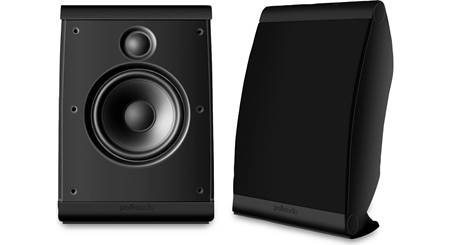
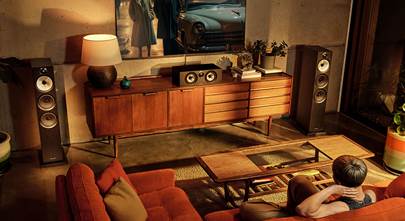
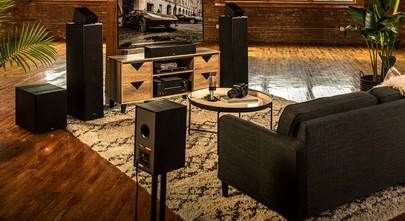
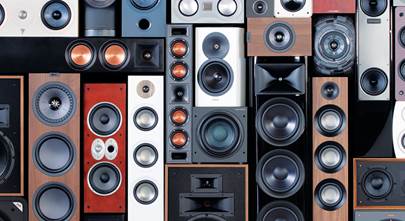
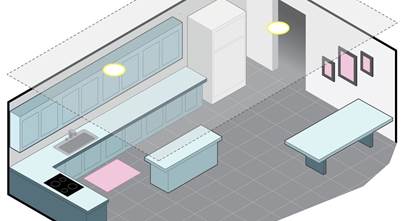
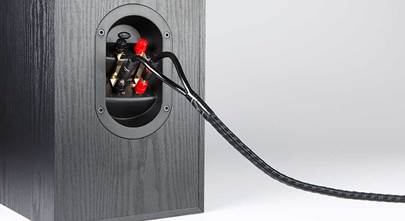


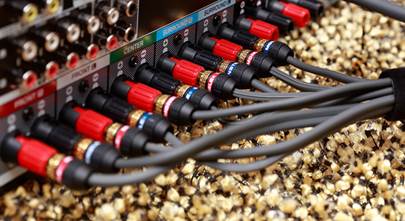


Tommy from Montello
Posted on 12/7/2022
What type of speakers are best if your seating is rite against the wall? I have 2 svs prime bookshelf at ear level but there face about 5ft from me rite to the side of my head. Would I be better off with bipol or dipole instead and were should I place them. Thanks in advance.
Andreas
Posted on 11/10/2022
Hi, I'm on the same problem. I have the bronze fx and 4 SVS prime elevations for Atmos. I'm thinking about to get one more pair of prime elevations for the surrounds. Where did u put the bronze fx for ur surrounds? 90 degrees or more 110 degrees in ur Atmos setup? Or at the backwall? But than the angles are wrong. Greets Andreas
Eshwar from Bangalore
Posted on 4/25/2022
I want a sub woofer for the tv how much coast will happen
Radhe Lanka from Plano
Posted on 2/17/2022
I have Energy Connoisseur 7.1 speaker setup and never used the bipole/dipole set. Now I know how to use them via your article. Thank you Crutchfield Team!! Added Klipsch RF-7II mains and running fronts and side with Yamaha RX-3000 and a Russound-3000 amp for the rears. The Bipole/Dipole set now will go on to the side wall and I can play with the toggle switches. Will try them as rear presence too and test.
Kramer Crane from Crutchfield
on 2/18/2022
Mohan Misra from Bengaluru, India.
Posted on 1/29/2022
I have been trying to figure out the concept and application of Monopole, Dipole and Bipole Speakers. It is this article that has really given me clarity and understanding on the subject. I am also clear now what I need for my setup. Thanks for giving a better perspective on the subject.
Kramer Crane from Crutchfield
on 1/31/2022
David
Posted on 12/27/2021
Thank you for writing this article! I always learn something new when shopping Crutchfield, and I was amazed at how much more information you all have on speakers compared to the factory/direct websites.
Kramer Crane from Crutchfield
on 12/27/2021